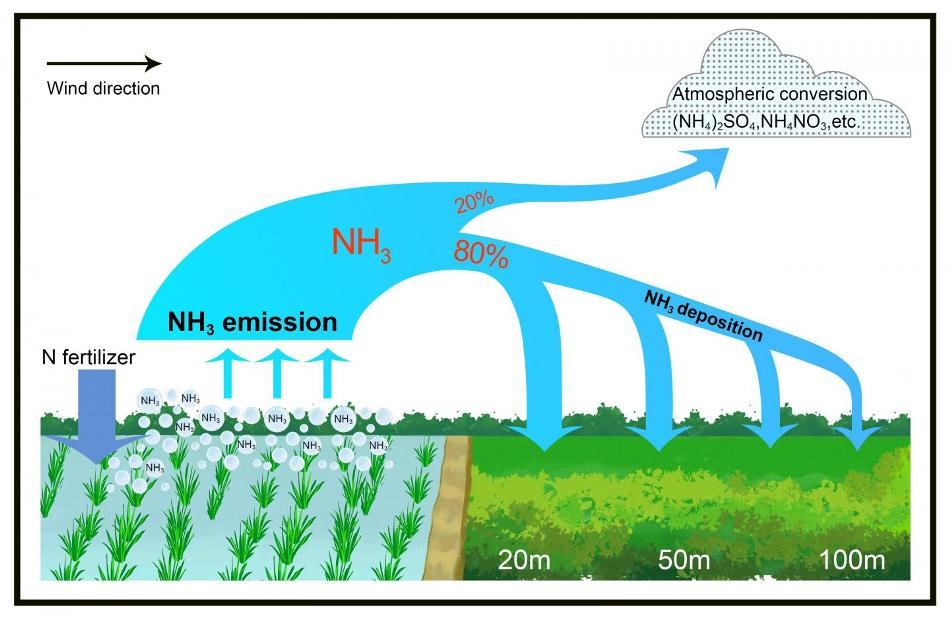Mar 23 2020
Enormous amounts of ammonia are emitted by nitrogen fertilizer in croplands and livestock production. Ammonia is the most abundant alkaline gas found in the atmosphere.

Ammonia emissions, deposition, and conversion to aerosols in the atmosphere. Image Credit: Jianlin Shen.
Over the past few years, Chinese researchers have recommended that decreasing ammonia emissions is an effective measure to prevent aerosol pollution since ammonia tends to react with acidic gases to form aerosols and pollution.
Ammonia is also reactive and sticky, and can be removed from the atmosphere quickly. We call this process dry deposition. Agricultural sources contribute to most of the ammonia emissions, but whether all the ammonia emitted from agriculture enters the atmosphere needs to be urgently evaluated.
Dr SHEN Jianlin, Institute of Subtropical Agriculture, Chinese Academy of Sciences
This was the inspiration for a study performed by Dr Shen and his collaborators. The study was recently reported in Atmospheric and Oceanic Science Letters, published by the Institute of Atmospheric Physics, Chinese Academy of Sciences.
Comparatively, the intensity of ammonia emissions is high in China’s subtropical hilly areas. The distribution pattern of animal farms or croplands associated with the surrounding natural ecosystems in this area might lead to the deposition of a large proportion of the emitted ammonia in the nearby areas of the sources prior to entering the air. Therefore, it is essential to find out the fate of the emitted ammonia in these subtropical hilly regions of China.
Paddy fields constitute a major type of cropland in the subtropical hilly regions of China. We developed a method to measure the ammonia dry deposition around ammonia emission sources, and used it to measure the ammonia concentrations and dry deposition within 100 m around paddy fields (0.6 ha) with double rice cropping in the subtropical hilly area of southern China.
Dr SHEN Jianlin, Institute of Subtropical Agriculture, Chinese Academy of Sciences
From this research, it was identified that high ammonia concentrations were present at downwind sites within 100 m from the paddy fields. This occurred in the 15 days following the application of nitrogen fertilizer. When the distance from the paddy fields increased, the concentration of ammonia in the atmosphere at the downwind sites reduced considerably.
The deposition of ammonia within 100 m downwind of the paddy fields made up nearly 80% of the ammonia emitted from the paddy fields. Hence, only around 20% of the emitted ammonia entered the air to form aerosols.
Our study indicates that ammonia deposition in the neighborhood of sources can largely reduce the amount of emitted ammonia entering the atmosphere, and thus can reduce atmospheric ammonia pollution.
Dr SHEN Jianlin, Institute of Subtropical Agriculture, Chinese Academy of Sciences
“This mechanism should be considered in inventory compilations in order to objectively assess the potential impact of agricultural ammonia emissions on air pollution. Measures to increase the level of ammonia deposition around sources, such as by planting trees, are advocated to reduce the amount of ammonia pollution,” concluded Shen.
“This study is only a case study. In the future, we intend to study the dry deposition of ammonia around sources with different emission intensities to assess the fate of ammonia when it is emitted from these sources,” added Shen.
Source:
http://english.iap.cas.cn/